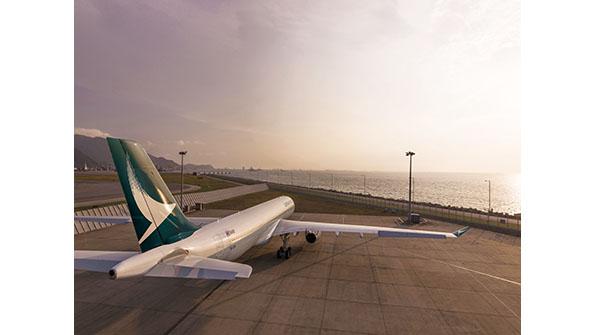Legacy Carriers Must Adapt To The New Reality | 传统航空公司必须适应新现实

在当前的航空运输业中,航空公司、航空公司职员、机场公司,以及任何服务于航空运输业的企业都不需要为新冠病毒疫情所造成的破坏负责,而且也不可能对此做出预测。全球对于病毒的传播、边境关闭、隔离措施以及经济不确定性的恐惧,已使这个行业在收入、就业,甚至期货投资等方面损失惨重。这是无法想象的。
No airline, airline employee, airport or company serving the air transport industry bears fault for or could have forecast the devastation wrought by the COVID-19 pandemic. Global fear of virus transmission, border closures, quarantines and economic uncertainty have inflicted an almost unimaginable toll on this industry in terms of lost revenue, jobs and even futures.
虽然现在形势紧张的原因是不可预测的,但在没有政府援助的情况下,包括大多数大型传统航空公司在内的大量航司从繁荣走向破产是如此之快速,因此有必要从根本上重新考虑大多数航空公司的运营方式、现金组成,与成本基础。
Even so, the speed with which so many airlines, including most large legacy carriers, descended from boom to would-be bust without government aid indicates a need for a fundamental rethink of how most airlines operate and their cash balance versus cost base.
航空公司的运营是一项高成本的业务。安全是每家航空公司的重中之重,并需要为此付出昂贵的成本,而且飞机本身和机上一切物品都很昂贵。而虽然目前燃料价格正处于低点,但燃油成本仍然占据总成本很大比例。政府税收和机场费用可能会高的不成比例,而劳动力的成本往往是各种成本中最高的。
Running an airline is a high-cost business. Safety, which is every airline’s top priority, is expensive. Aircraft and everything on and in them are expensive. Fuel, even at its lower price end, is a major proportion of cost because of the volumes needed. Government taxes and airport fees can be disproportionately high. And labor is often the highest cost of all.
在一些国家中, 政府对航空公司的援助使他们在极其困难的时期内保持了稳定运营,这是至关重要的。但援助不是长久的、可以反复出现的支持。因此为了更好地应对疫情引发的经济衰退,航空公司必须进行重组,而且最好不经过破产的流程,他们必须把建立强大的现金储备放在为优先的地位上。
Government support that has been given to airlines in some, but not all, countries has been crucial to keeping them afloat through extremely difficult times. But it cannot be a long-term, recurring prop. To better prepare themselves for an extended COVID-induced economic downturn, airlines must restructure, preferably outside of a bankruptcy court. And they must put a much higher priority on building strong cash reserves.
这些传统航空公司还必须意识到,疫情的流行已降低其服务水平,而现在超低成本航空公司已经能提供与过去的传统航空公司相同或更好的服务。这是因为超低成本航空公司的辅助收入模式意味着他们仍然可以对机上的零食、饮料和其他服务进行收费,就像疫情爆发前一样;而许多大型航空公司已经暂停所有的机上服务,许多航司的俱乐部和休息室都关闭了,即使是VIP客户也需要为此支付高昂的费用。在这样的情况下,所谓全服务航空公司和低成本航空公司的区别又是什么呢。
Legacy and major airlines must also grasp that the pandemic has stripped them down to commodity level. The world’s ultra-LCCs are now in a position to offer equal or better service than the “full-service” carriers. The ultra-LCCs’ ancillary revenue model means they continue to offer the same for-sale onboard snacks, beverages and amenities they served before COVID struck. Many major carriers, meanwhile, have suspended all onboard service. Many airline club lounges, for which even high-tier customers typically pay a high fee, are closed. What’s to distinguish the full-service carrier from the ultra-LCC?
同时,更具灵活性、创新性和较少工会限制的超低成本航空公司正在向数字化转型,以进一步降低成本,同时为客户提供比以往任何时候都更加需要的即时信息和其他自动化功能。
Meanwhile, the more agile, innovative and less union-controlled ultra-LCCs are turning to digitalization and technology to push costs even lower while giving customers the instant information and automation they need more than ever.
一些传统运营商正在意识到疫情的流行及其后果所带来的全面结构变化。如国泰航空集团作出了艰难而勇敢的决定,拒绝为其干线航空公司提供第二批政府工资补贴,并承认现在需要的是一项长期计划,以使国泰航空拥有合适的规模和成本的 “新现实"。
Some legacy carriers are recognizing the sweeping structural changes compelled by the pandemic and its aftermath. Cathay Pacific Group has taken the difficult but brave decision to decline a second tranche of government wage subsidies for its mainline carrier, acknowledging that what is needed now is a long-term plan to make Cathay the right size, shape and cost for what it calls “the new reality.”
实际上,所有航空公司现在都处于“新现实”中。只有适应这个现实才能生存下来。
All airlines are now in the new reality. Only those that adapt will survive.
这条消息是Karen Walker 在Aviation Daily发表的文章。加入航空周刊情报网(AWIN)会员,访问公司、项目、机队和联系人数据库,获取权威解析与市场情报并找到新的业务机会。点击击此预约您的产品演示。